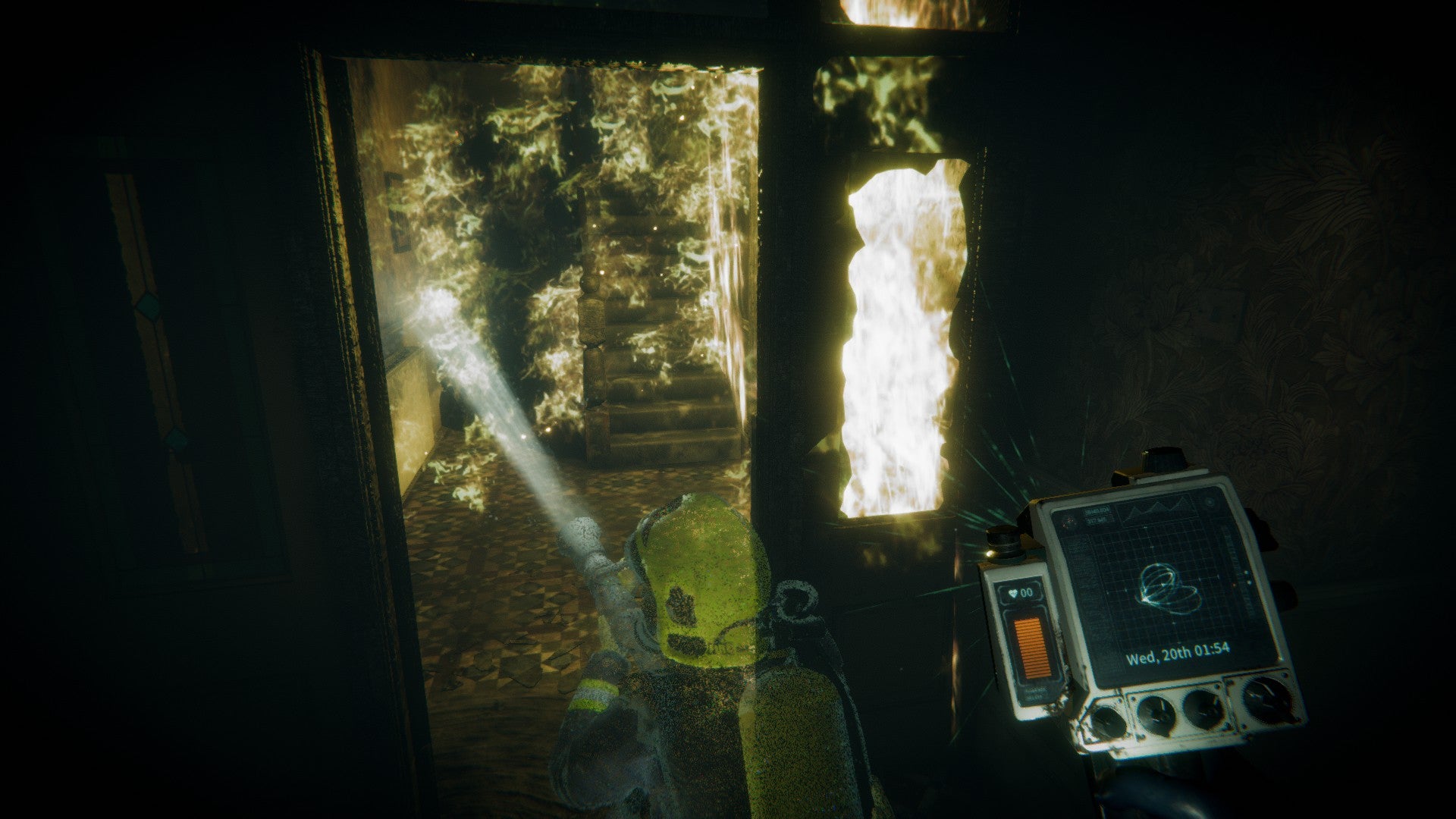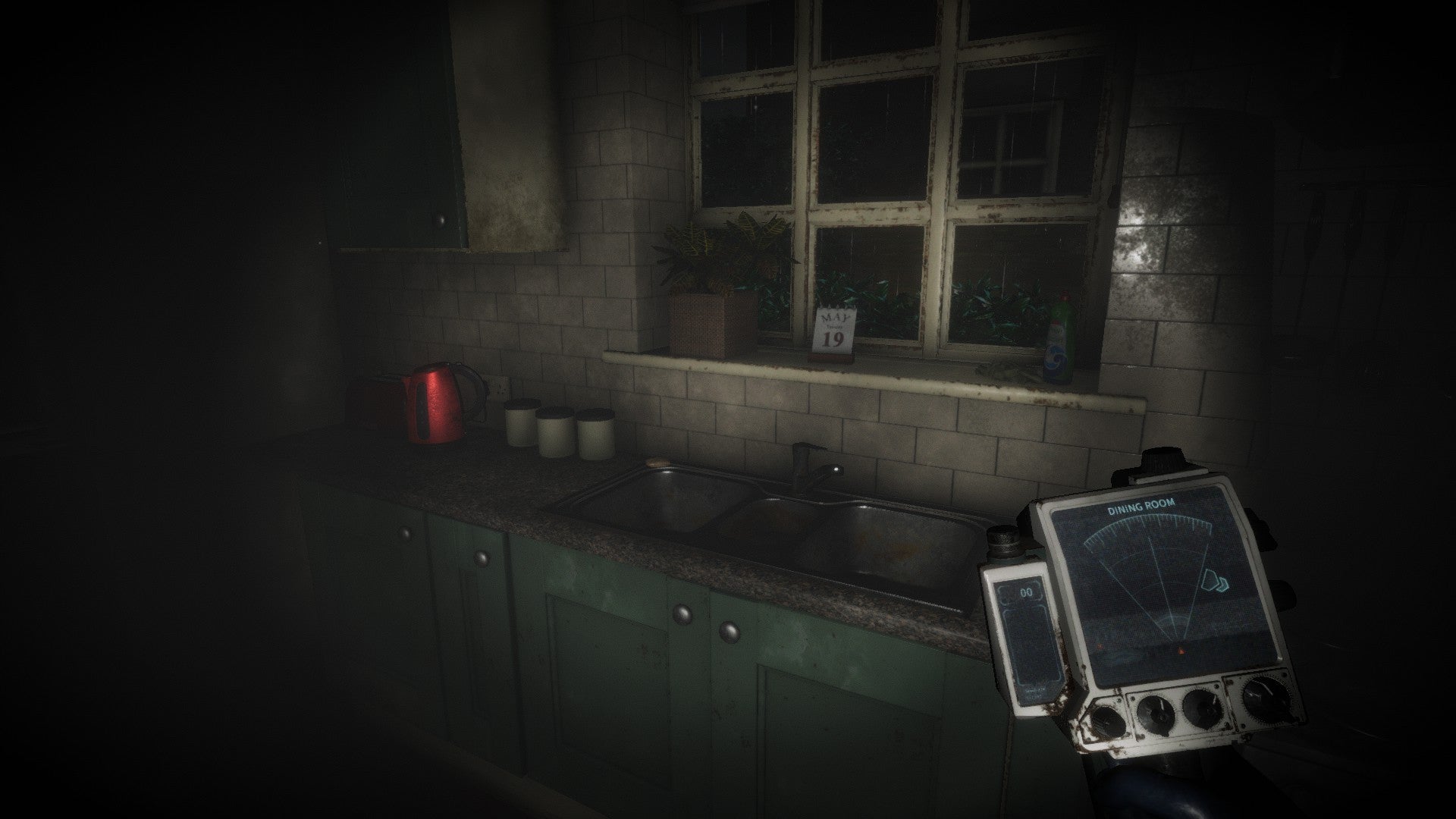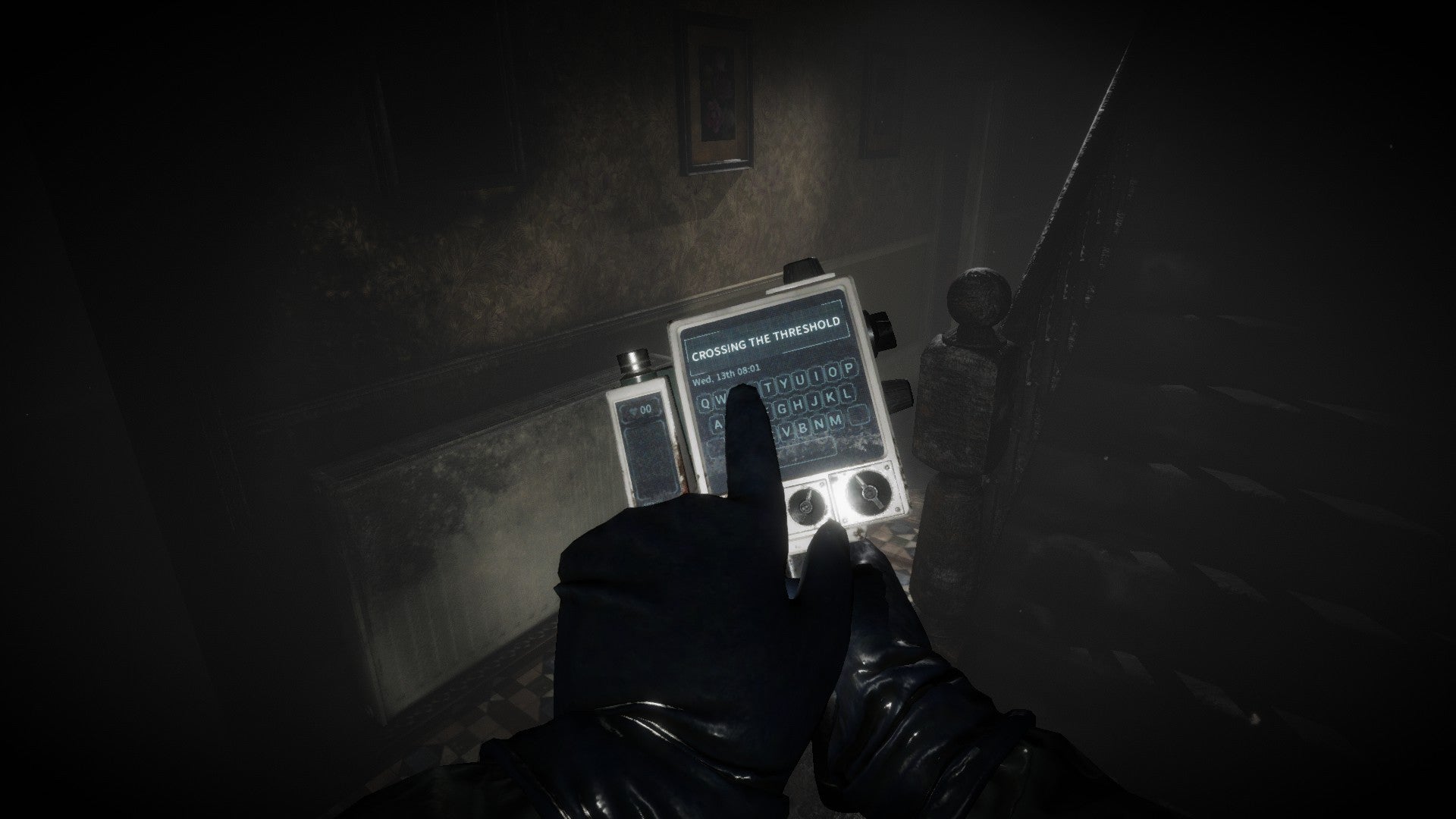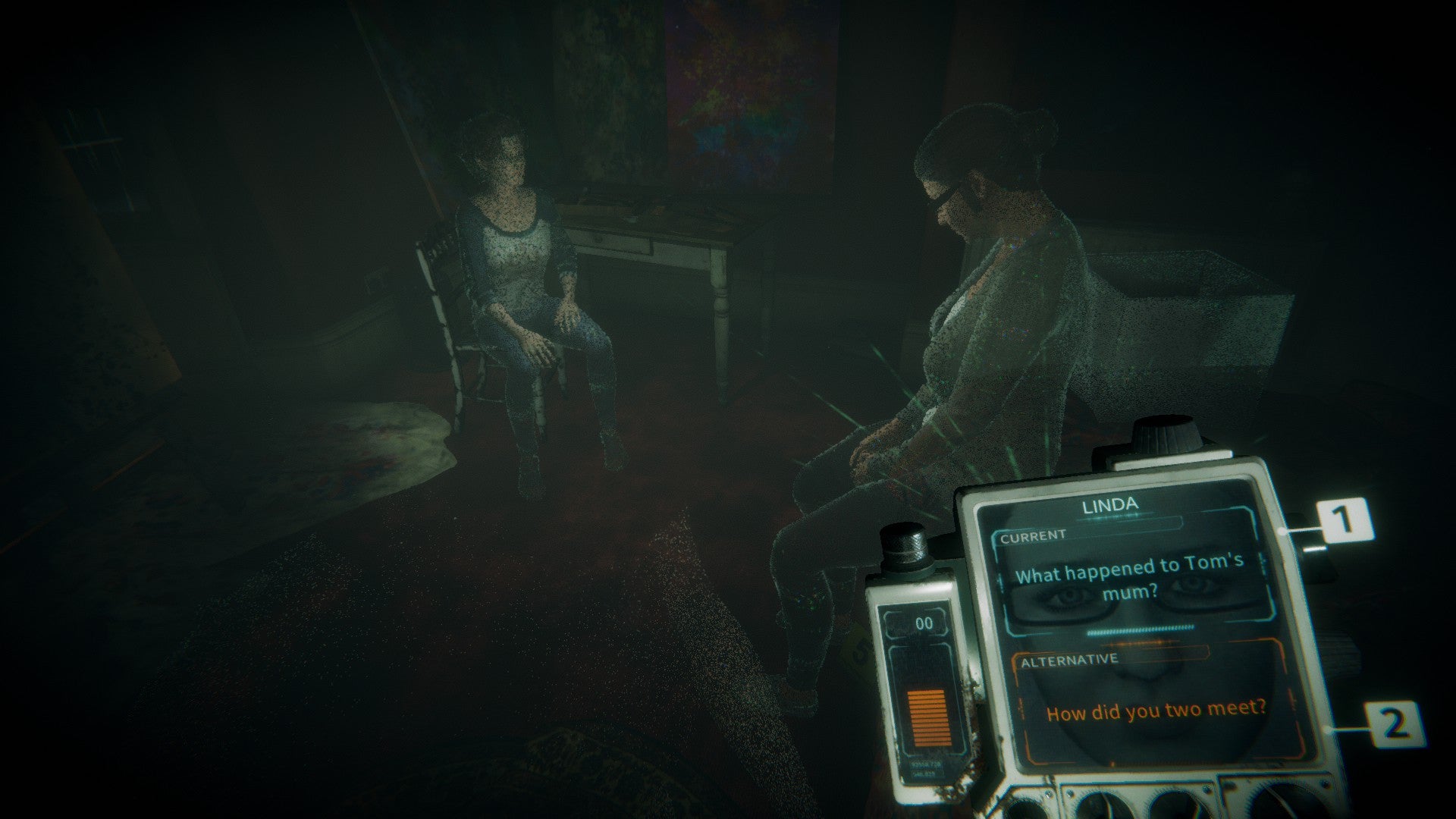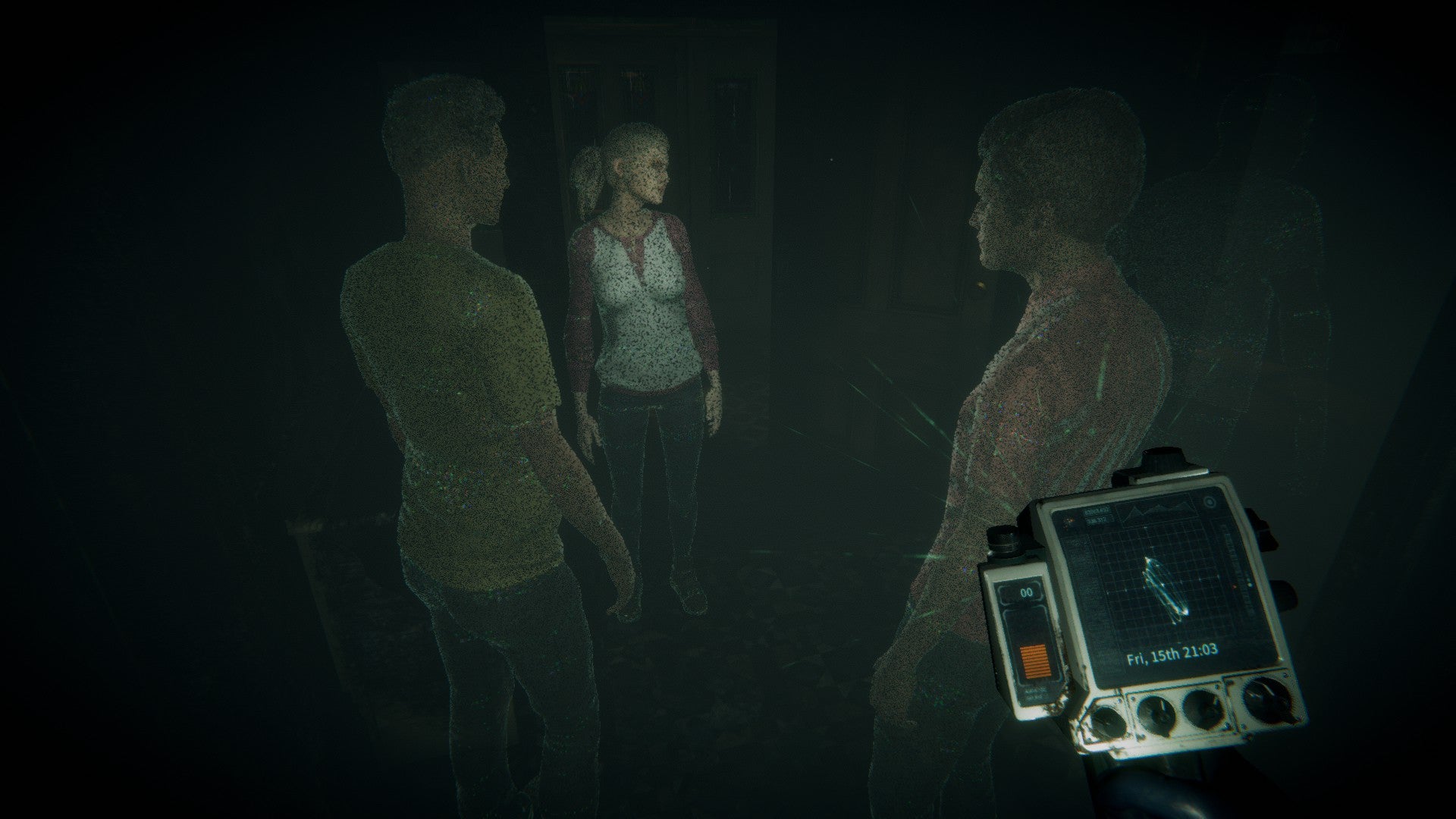It’s a common thread in some of my personal favourites - think Dishonored, The Last of Us, Gone Home - because of the many uninhabited homes we get to explore in those worlds. Am I a platonic voyeur? Maybe. But I’m endlessly delighted by environmental storytelling. Games that show me a kitchen littered with mouldy takeaway containers and scattered Vodka bottles are infinitely more satisfying than those that would instead give me an in-game diary page from an alcoholic. This is undoubtedly where Eternal Threads’ puzzling magic lies. Despite the melodramatic opener that informs us that “we broke the world” by time-travelling all willy-nilly and releasing radiation into the time stream that changed “countless seemingly insignificant decisions throughout history”, an elegant layer of melancholy lies over Eternal Threads. The ordinariness of its people - their rooms, their shared spaces, their conversations, the letters they screw up and toss into the bin - is captured with ease. Both our world and cast are small. We explore only a single deserted home once inhabited by a handful of ordinary folks, but getting to know them isn’t just a pleasure; it’s a matter of life or death. The first time you step into 14 West Park Road’s past courtesy of your hi-tec Visualiser - a wristband device that reenacts holographic visions of what’s come before - it is ablaze. Firefighters crouch in the doorway, hoses pumping, desperately trying to get the flames under control. Six people lived here - a cohabiting couple; a brother and his older sister who’s only just moved in; a party-hungry friend; and their live-in landlord - and now they’re dead. What’s left of their home holds only glimpses of the people they used to be. A discarded mobile here, a singed book on a shelf there. You, known only as Forty Three (whatever happened to the 42 before you?!) must save them, and you must do it by altering decisions they made in the week before they died. Even if we’re inexplicably not permitted to prevent the fire from starting in the first place - yup, that confused me, too - change the right ones in the right order, and you may just be able to save them all. Yes, it’s all very Butterfly Effect-y and Doctor Who-y and, at first, it’s easy to be overwhelmed. To identify the things you can change - however seemingly inconsequential in the moment - you must navigate a Time Map, eavesdropping on their conversations and discovering clues. Making changes, like having Linda ask about the strange, broken doll in Raquel’s room, perhaps, or stopping Tom from drunk-texting his ex for a boozy booty call, may not sound like much on their own, but make enough of these choices and you’ll re-wire a timeline entirely, possibly putting them in a different frame of mind or location when the fire breaks out. This is one of those times, though, when watching a Let’s Play or teaser trailer may put you off. When you’re first introduced to the mechanics of Eternal Threads, it all looks horribly complex and tricky to navigate. It’s to Cosmonaut Studios’ credit, then, that in practice it’s actually pretty easy to find your way around, shooting up and down the timeline to revisit certain days and events to tweak your outcomes. That said, I often found it easier to work things out by trial and error than make sense of the pop-up tutorials which sometimes made things sound more complicated than they actually were. The house itself is carefully realised and a joy to explore - even a touch spooky, dressed up as it is in that unique rain-sodden darkness known best to those of us on this grey, wind-swept island of ours. I couldn’t help but wish that Eternal Threads had more discoveries secreted in and around the building, however, as this could’ve helped round out the characters and make us better understand their motivations beyond just eavesdropping. And while the cast models themselves lack the detail of the house itself, most of the time they all do exactly as I’d expect them to and behave in authentic, believable ways, their regional dialects only occasionally delivering lines that feel a little flat or unnatural. Getting the optimal result, though - that is, all six characters not only surviving but going on to lead happy, fulfilled lives - is hard bloody work, not least because whilst the long and incredibly complex Time Map competently tracks all the different options and changes, my head does not. Scrolling through hundreds of different offshoots and possibilities is just as clumsy as it sounds, and it sometimes felt as though a positive outcome was less about the Butterfly Effect and more about just being sensible and thorough. Interestingly enough, you can travel across the timeline at your own pace and place. Want to start on Day One? Sure. That makes sense. Wonder if it may be better to start at the end and work your way back? Sure, that could work, too. The freedom to move about as you feel fit is a peculiarly liberating feature, as is the ability to make a dialogue change without having to sit through the entire holographic performance again. It’s touches like these that suggest Cosmonaut thought long and hard about the user experience here, and hints it has the confidence to give players full control of its storytelling - even if we’re telling it badly or in the wrong order. Frustratingly, though, I found there was no meaningful climax to this story. It’s painfully unsatisfying to spend hours getting to know these people - to care about them enough to not leave them to burn in their beds - and not get a meaty conclusion. I also wanted to know more about Forty Three, too, and his strange quest to fix broken timelines. The cynic in me supposes there’s a sequel or DLC on the way and whilst that isn’t a bad thing in and of itself, it feels a touch uncharitable to hold the story’s resolution hostage to those of us who made it to the end. Those few quibbles aren’t quite enough to sully Cosmonaut’s otherwise thoughtful game, though, and it sank its talons in deep enough to keep me experimenting with “just one more” event into the wee hours. It’s possible some may mislabel its careful pacing as slow, and others may think its prosaic presentation boring. For me, however - whilst it’s not without its flaws - Eternal Threads presents its story, characters, and mechanical systems with care and precision, weaving together an entirely captivating experience.

